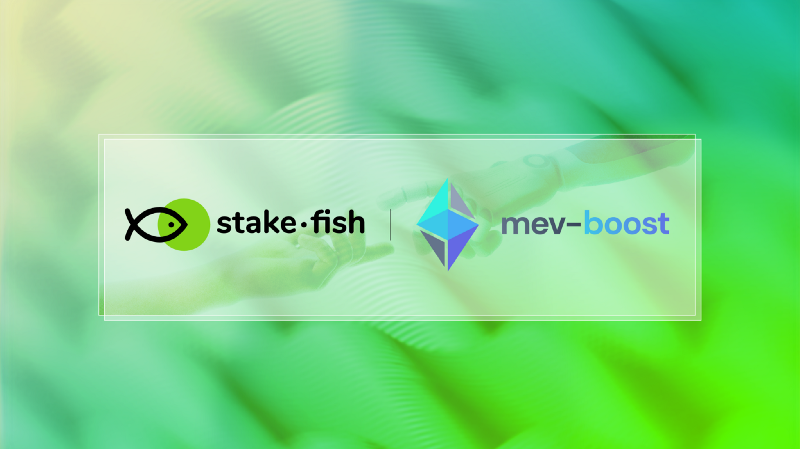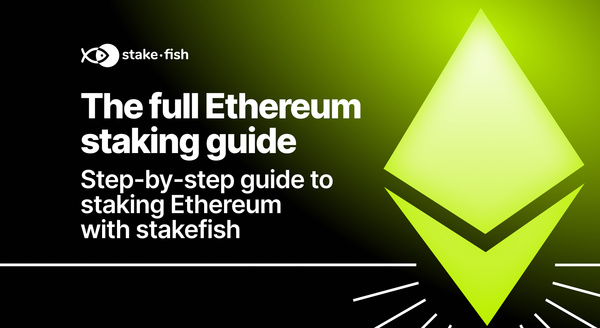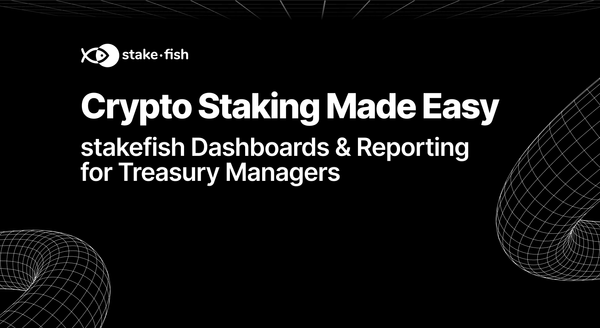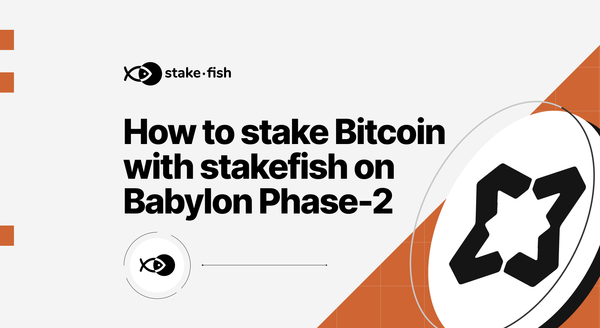stakefish Announces Support for MEV-Boost
Today, we’re announcing our support for MEV-Boost, a proposer-builder separation solution developed…

stakefish Announces Support for MEV Boost
Today, we’re announcing our support for MEV-Boost, a proposer-builder separation solution developed by Flashbots for Ethereum. We will be getting ready to run MEV-Boost on the validators we operate for our stakers in time for the Merge. With the arrival of the Merge, Ethereum will officially turn off Proof of Work for good and migrate to Proof of Stake. Ethereum’s Proof of Stake consensus layer has been running without any issues since December 2020, proving that the consensus layer is ready to secure Ethereum’s execution layer. However, it’s important to understand how the dynamics on the execution layer have evolved. People don’t use Ethereum simply to send and receive tokens anymore. The execution layer supports a rich ecosystem of DeFi, NFTs, DAOs, and other applications that users interact with on a daily basis. This gave rise to new profitable opportunities that could be extracted by those who create blocks and determine the transactions included in these blocks.
Due to its prevalence, most DeFi and NFT developers and users will have experienced MEV (Maximum Extractable Value) by this point. In its earliest days, MEV was primitive, focused on liquidation prioritization on applications like MakerDAO. But as on-chain activities started to spike and become complicated, so did the number of MEV opportunities on Ethereum. No on-chain actions were truly safe from MEV extraction any longer. Harmless MEV extraction was overshadowed by the volume of harmful MEV extraction that had started to surface. The most representative examples of negative MEV extraction were sandwich attacks. They had significantly degraded user experience and were theorized to eventually threaten the integrity of Ethereum itself.
Flashbots arrived on the scene as the white knight with three stated goals: democratize access to MEV, bring transparency to MEV, and redistribute MEV revenue. They have been shipping dashboards and educational materials to raise awareness around this topic. But, most importantly, they built mev-geth, which distinguished the roles of searchers (block builders) and miners (block proposers) and how they interact with each other. Searchers look for MEV opportunities and forward them as bundles to miners. Miners include the bundles provided by the searchers into new blocks. During this exchange, searchers share a portion of the MEV revenue with the miners to incentivize them to faithfully include bundles into blocks.

Flashbots’ adaptation of geth provided the perfect playing field for the market participants to play competitive games to fairly price how MEV should be extracted and shared amongst searchers and miners. Miners were being rewarded for the first time for MEV extraction without having to either become a searcher themselves or enter into opaque backroom deals with external searchers. They simply needed to run mev-geth and include Flashbot bundles into the blocks they built. The miners’ responsibility will be handed over to validators along with the Merge. Thanks to Flashbots, stakers will also have the opportunity to earn a fair share of MEV revenues through MEV-Boost, the Proof of Stake version of mev-geth.
stakefish has been closely monitoring the evolution of MEV. Between increasing rewards for our stakers and mitigating the negative effects of MEV on Ethereum, we wanted to find a balanced approach. We firmly believe MEV-Boost is the answer we are seeking, allowing us to align with both our stakers and the Ethereum network. Through MEV-Boost, we will be delivering a fair share of MEV to our stakers while also supporting a transparent and fairer Ethereum network. We are grateful for the tireless work by the client teams and Flashbots team. We will do our part by preparing and testing MEV-Boost on our current infrastructure stack.
To add one additional note, we acknowledge that Flashbots in and of itself could be a centralization risk factor. If all validators use MEV-Boost, could Flashbots go rogue and start to abuse its position? While we deem this to be unlikely as their team members are long standing contributors to the Ethereum ecosystem, we want to assure our stakers and the ecosystem that we will constantly assess and review different ways of supporting fair MEV extraction. We have been and will stay open minded and listen to anyone who is building MEV infrastructure. But until we have found a provably better solution than Flashbots, we will keep supporting MEV-Boost and help them elevate Ethereum as a equitable blockchain for all.
About stakefish
stakefish is the leading validator for Proof of Stake blockchains. With support for 20+ networks, our mission is to secure and contribute to this exciting new ecosystem while enabling our users to stake with confidence. Because our nodes and our team are globally distributed, we are able to maintain 24-hour coverage.
Website: https://stake.fish
Telegram: https://t.me/stakefish
Twitter: https://twitter.com/stakefish
Instagram: https://www.instagram.com/stakedotfish
YouTube: https://www.youtube.com/c/stakefish





